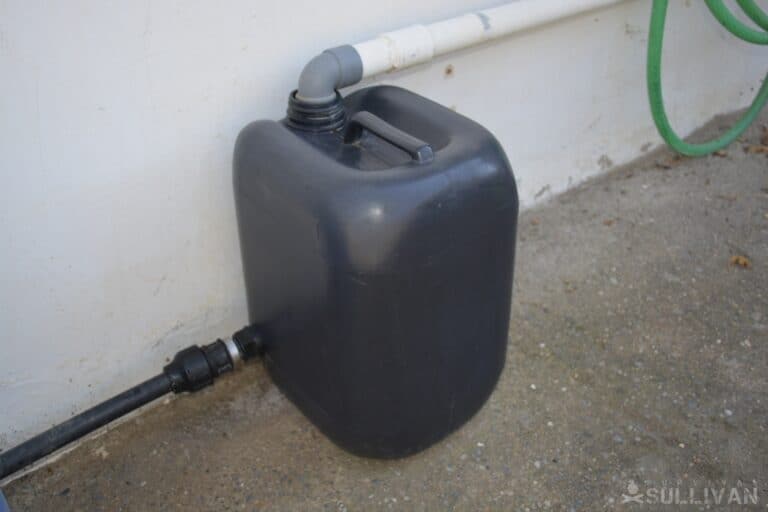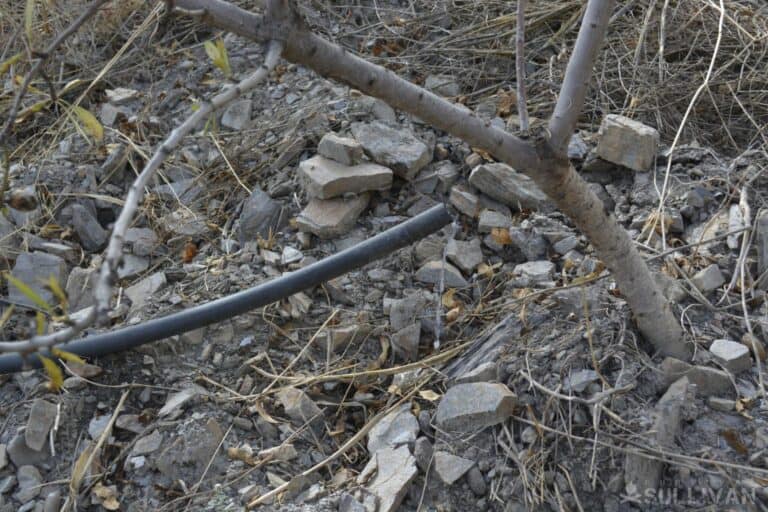Easy Way to Collect Grey Water From Spa
Recycling water is just as possible as recycling plastic bottles. You might not realize that some of the water you use on a regular basis is considered grey water. There are ways you can safely reuse grey water, especially in a survival scenario or once an SHTF situation calms down.
You might not even be in an SHTF scenario to want to consider using grey water. Our climate is continually changing. California faced a major drought not too long ago, and it was crucial for citizens to be conservative with their water. We have no idea where or when the next drought might hit.

Water is essential for life. Without a doubt, it is the most fundamental and valuable natural resource available to all living things, humans included.
However, fresh water isn't an infinite resource. For example, a huge portion of the Earth is covered in salt water, which is unsafe for us to consume for hydration. Only a portion of the water throughout the world is potable. In fact, only 2% of the water supply is fresh water!
What is Grey Water?
Before we get too far, it is essential that you understand what qualifies as grey water. Grey water refers to wasted fresh water that comes out of the drains. It is the water that goes down your sink after you wash your hands or take a bath. It is the water that drains out after you wash your clothes.
You must differentiate grey water and black water. Black water is what you flush down the toilet each day. It doesn't qualify as grey water and is not safe for you to recycle.
Blackwater requires major treatment and a sanitation process, typically done at large facilities. Blackwater is water that is contaminated by feces and other bodily waste.
We must remember that not all grey water is equal. You have to consider what is in the grey water to decide how it can or cannot be reused.
For example, dishwasher will contain organic matter, chemicals, and, potentially, pathogens. On the other hand, washing your hands doesn't introduce as many pathogens. Grey water with potential pathogens should not be used for irrigation purposes.
Collecting Grey Water
In most homes, the plumbing system is not able to tell the difference between black and grey water. It is all mixed as it leaves the house for our septic or sewer systems. The biggest problem when you want to use grey water is figuring out how to collect it effectively.
An ideal situation would be to create an empty tank to collect grey water. However, that would require you to change the plumbing in your home drastically, and it could be against the codes. There are things you can do yourself or with someone who has some plumbing knowledge.
The most common choice is to follow the water pipes that drain with a gravity feed. These are the pipes that come from your kitchen and bathroom sink, bathtub and washing machine.
You want to follow the pipes down to an exterior wall. With some help and elbow grease, you can attach an additional pipe that leads to your garden or a holding tank.

There are also lots of simple tips for grey water collection. Remember, using grey water is supposed to save you money, so don't think you need an expensive setup. Here are some easy tips!
- Put a bucket in the shower to easily collect warm-up water.
- If you have any unused drinking water, store it! Don't dump half-full bottles of water. You can put them in your fridge, use to water plants or store in a filtering pitcher.
- Wash your dishes in a dishpan instead of in your sink.
- If you wash your fruits and veggies, do so in a bowl of water rather than under running water.
- Save water from dehumidifiers.
- Scoop out bath water with a bucket.
- Use a bucket to capture the rinse water from washing machines.
The Important "DOs" of Grey Water
- Do check your local rules and regulations for grey water Believe it or not, some locations prohibit some or all collection of grey water. For example, many areas do not allow you to collect grey water from the kitchen sink.
- Do limit your contact with grey water, especially with your bare hands. You might introduce a bacteria that was not very otherwise.
- Do understand what each type of grey water can be used for and what it may contain.
- Laundry water may contain soaps or fecal matter from clothing. However, this grey water is suitable for irrigation purposes.
- Kitchen water contains dish soap, traces of pesticides and food scraps. You should not use kitchen sink grey water for irrigation, but you could use it to flush toilets.
- Bath water might contain soap and shampoo, as well as fecal matter and urine. You can use it for irrigation purposes.
- Hand sink water contains soap, toothpaste, and residues from cleaning products. Using it for irrigation purposes is possible.
- Do try to use a recycling system based on water flow rather than a pooling Pooling water increases the chances that bacteria could grow inside. While there are no reported deaths or illnesses caused by grey water, we must be careful to keep our family healthy. An example of pooling water would be a bucket of water sitting on your countertop with dishwater. A system based on water flow would have a pipe flowing into the container for new water, as well as a pipe leading to either a tap or an irrigation system. The water is moving in and out with regularity.
- Do use natural, biodegradable soaps, shampoos, detergents and other products. Doing so increases the quality of your grey water.
- Do catch warm-up water, meaning the water that goes down the drain as you wait for the water to reach the temperature you desire. You might be surprised how much water you waste in your shower and sink. Warm-up water is clean and presents virtually no health hazards!
- Do find ways to use grey water every You can use it to flush the toilet, water houseplants, along with outdoor plants!
- Do rotate the area you water, either with a grey water hose or irrigation, to reduce the possibility of toxin build-ups.
- Do make sure that you monitor your soil regularly to ensure the grey water is not causing an issue. You should check the pH level, smell, and signs of life such as earthworms.
- Do use a watering system that distributes the water below the soil surface. While it does involve more upfront work for you, creating a grey water irrigation system comes with the natural benefit of the soil filtering out toxins.
- Do use a nylon stocking or a sock at the end of the hose to filter out any lint and hair.
- Do remember that a filter is necessary if you install a drip irrigation system. You will want to install a fine mesh filter on the pipe that connects the grey water collection system. Filtration is necessary to stop lint and other particles from entering.
Crucial "DON'Ts" of Grey Water
- Don't drink grey water. It should not be used for human consumption!
- Don't allow your children or pets to play in the grey
- Don't use on edible plants such as your vegetable garden or fruit trees. While some people may do so, it could potentially introduce contamination. If you want to use it on edible plants, you need first to divert the water through a filtration system. The purpose is to remove all waste matter before using it on food crops.
- Don't store grey water for long periods of time. It is ideal to reuse before a 24-hour window to reduce the buildup of pathogens and bacteria.
- Don't use bleaches and disinfectants that will flow into your grey water collection system.
- Don't think you need a complicated system with pumps and expensive filters to collect your grey water. Try the tips listed above. There is no reason that you need a degree to make this happen.
- Don't collect grey water if your ground freezes several inches deep during cold winters. It is best to avoid collecting and irrigating during the cooler temperatures. It is best to divert the grey water to your septic tank or sewer system during the winter.
- Don't try to store winter grey water for the springtime uses! You can create a colony of pathogens.
- Don't collect grey water if someone in your home has an infectious disease. You need to avoid that grey water until your family member is healthy. Why should we take this step? We don't want to re-introduce bacteria or viruses to our family and risk our health.
- Don't use grey water in the same area as food or water sources of your livestock. It may seem like a wise idea, but remember we need to reduce any contamination.
- Don't use grey water on acid-loving plants. Plants to avoid, aside from edible ones, are azaleas, begonias, gardenias, hibiscus, camellias, and ferns.
Whether you are trying to save money or need to preserve water for a drought, it is important for you to understand the dos and don'ts of grey water.
Grey water collection can be easy or complicated, depending on the system you pick. Most importantly, you must remember that grey water is not for human consumption and to avoid storing the water for longer than 24 hours. Stick to the tips!

Bethany Hayes is a mother of three kids who has a small, suburban homestead. When she isn't homeschooling or gardening, she might be focusing on building up their homestead or preserving the harvest.
Source: https://www.survivalsullivan.com/dos-donts-grey-water/
0 Response to "Easy Way to Collect Grey Water From Spa"
Post a Comment